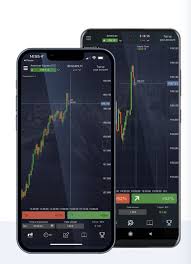
Trading Strategy with Envelope
In the world of trading, the Envelope indicator serves as a powerful tool that helps traders identify entry and exit points. This strategy, which combines the Envelope indicator with price action, can significantly enhance your trading performance. For a practical guide on implementing this strategy, check out this resource: Trading Strategy with Envelope https://trading-pocketoption.com/strategiya-envelope-na-15-minut/
Understanding the Envelope Indicator
The Envelope is a technical indicator that consists of two lines, which are plotted above and below a moving average. These lines are typically set at a specific percentage away from the moving average and fluctuate based on market conditions. The main purpose of the Envelope indicator is to identify overbought and oversold conditions in the market.
How the Envelope Indicator Works
The Envelope indicator works by creating bands around a moving average, which represent the potential price range. When the price moves beyond these bands, it indicates a potential reversal. For example, if the price reaches the upper band of the Envelope, it may be overbought, suggesting that a downward correction could occur. Conversely, if the price hits the lower band, it may be oversold, indicating a possible upward reversal.
Setting Up the Envelope Indicator
To use the Envelope strategy effectively, traders must properly set up the indicator on their trading platform. Here’s how to set it up:
- Choose a moving average type (usually Simple Moving Average or Exponential Moving Average).
- Select the period for the moving average (common periods include 20, 50, or 100).
- Determine the percentage for the Envelope bands (this typically ranges from 1% to 3%).
Choosing the Right Timeframe
Timeframes play a crucial role in the effectiveness of the Envelope strategy. Shorter timeframes like 15-minute or hourly charts can produce more signals but may also lead to false breakouts. On the other hand, longer timeframes like daily or weekly charts tend to offer more reliable signals, albeit fewer in number. It’s essential to find a balance that suits your trading style and goals.
Entry and Exit Points

Determining entry and exit points is critical when implementing the Envelope trading strategy:
Entry Points
Traders can consider entering a position when:
- The price touches or breaches the upper Envelope line, indicating potential overbought conditions, followed by a reversal candle (like a shooting star or bearish engulfing candle).
- The price touches or breaches the lower Envelope line, suggesting oversold conditions, followed by a reversal candle (like a hammer or bullish engulfing candle).
Exit Points
For exit points, traders can utilize the following methods:
- Close the position when the price crosses back towards the moving average, which may indicate a potential trend change.
- Set a fixed take profit target based on the risk-reward ratio, such as 1:2 or 1:3.
Combining the Envelope Indicator with Other Tools
To enhance the effectiveness of the Envelope strategy, many traders choose to combine it with additional technical analysis tools. Some popular tools include:
- Relative Strength Index (RSI): This momentum oscillator helps to confirm whether a market is overbought or oversold. Obtaining signals from both the Envelope and RSI can improve the credibility of your trading decisions.
- MACD (Moving Average Convergence Divergence): This trend-following momentum indicator can provide insights into the strength of a trend, confirming entry and exit points provided by the Envelope.
- Support and Resistance Levels: Adding support and resistance levels to your analysis can help identify price targets and potential reversal areas.
Risk Management
No trading strategy is complete without proper risk management. The Envelope strategy, like any other, carries inherent risks. Here are some vital risk management tips to consider:
- Use stop-loss orders to protect your capital from significant losses. Place your stop-loss slightly above the upper Envelope when shorting and slightly below the lower Envelope when going long.
- Determine the amount of capital you are willing to risk per trade. A common rule is to risk no more than 1-2% of your trading account on a single trade.
- Regularly review and adjust your strategy based on market conditions and trading performance.
Final Thoughts
The Envelope trading strategy is a versatile and effective method for both novice and experienced traders. By understanding how to set up the Envelope indicator and combining it with other technical tools, you can significantly improve your trading success. Remember to prioritize risk management and continually test and refine your strategy for optimal results.
Conclusion
The Envelope strategy is an excellent addition to any trader’s toolkit. As with any trading strategy, it is essential to practice diligently and develop a deep understanding of the market dynamics that influence price movements. The careful application of the Envelope indicator alongside sound risk management practices can lead to successful trading outcomes.

